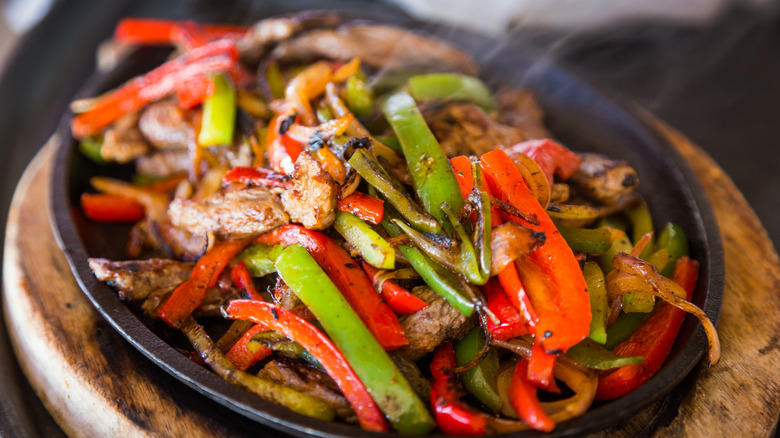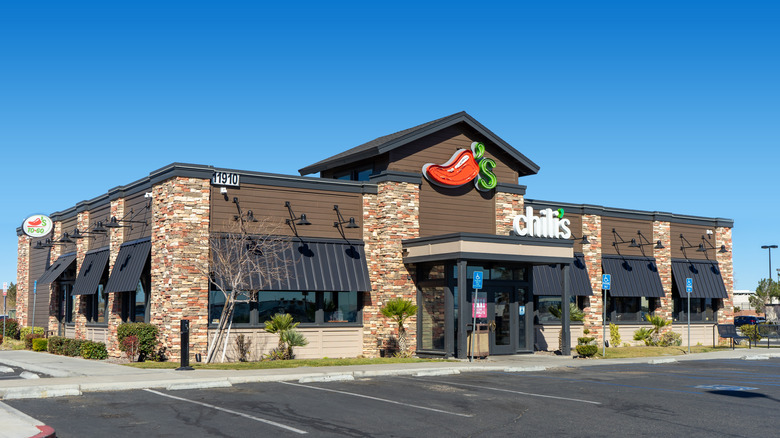How Fajitas Became Popular In US Restaurants
First you hear it. Then you smell it. Finally you see it. By that point, you have already decided: you, too, are ordering the fajitas.
It's hard to think of another dish on restaurant menus with the mesmerizing effect of fajitas, thanks to their unique sonic element. All it takes is one person ordering this dish, and then that sizzle passes through a restaurant's dining room, reminding every other diner how much they also want fajitas. The way fajitas' popularity boom plays out every night in restaurants across the United States is like a microcosm of how their overall rise to fame happened upon their invention.
According to the Austin Chronicle, we trace fajitas back to the 1930s in Texas. Mexican ranch workers were given meat as part of their payment, but the least desirable cuts. These workers and their families came up with a certain preparation to make this meat more appealing, with different spices and flour tortillas. Then, in 1969, writes Benny's Tacos, Sonny Falcon adapted the method in order to better sell these sorts of cuts at his family's meat market. Said cuts came from the middle of the cow, which Sonny dubbed "fajas," like "belt" or "sash," hence "fajitas."
Falcon began serving up his fajitas to rave reviews at events in West Texas. The same year, Otilia Garza debuted fajitas on the menu at her Round-Up Restaurant in the Rio Grande Valley, saying she learned the recipe from her grandmother. But how did fajitas go from some festivals and an independent eatery to putting chains like Chili's on the map?
How "the fajita effect" took hold
Texan restaurateurs and chefs started noticing fajitas' sizzling siren call to hungry festival-goers and patrons, according to "The Sonic Boom: How Sound Transforms the Way We Think, Feel, and Buy," by Joel Beckerman with Tyler Gray. After the Round-Up came an On the Border location in Dallas, and then the Hyatt Regency in Austin decided to take a gourmet approach. At the hotel's restaurant, La Vista, chef George Weidmann served up to 13,000 fajita orders monthly by 1984.
That same year, Chili's, which had first opened its doors in 1975, added fajitas to its menu in 23 different locations. People began lining up around the block for a table and a plate of fajitas, Beckerman writes, and cooks called this sizzling sensation "the fajita effect." They'd actually get fajita ingredients prepped and ready for a rush of orders as soon as their shift started, because once one sizzling plate of fajitas traveled past tables, the demand in the dining room would explode. Chili's even made t-shirts reading "I survived the Summer of Fajita Madness!" and the chain also put fajitas in its first television commercial.
According to Beckerman, Chili's often gets credit for making fajitas so widely popular because they kept it simple. Instead of trying to go gourmet or getting too inventive on the spices or preparation, the restaurant let the sizzle do the talking, and that kept people coming back for more. As anyone who's been at a restaurant lately and clocked that passing plate of fajitas can attest, "the fajita effect" is still very much in action.

